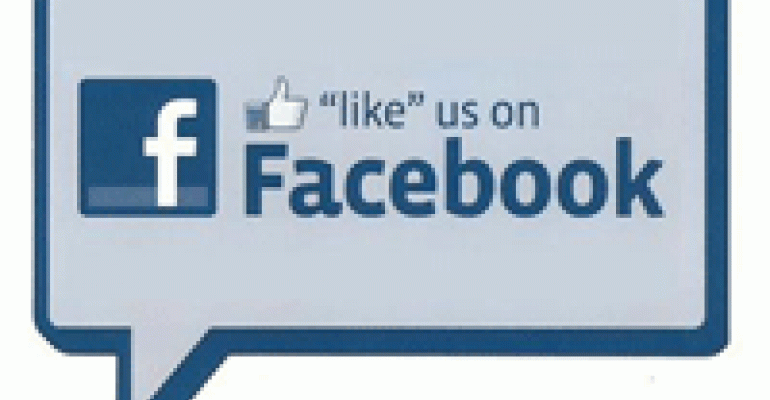
There’s no denying that full-service operators should leverage every social media marketing opportunity possible, especially because it costs so little to do so. But effectiveness? Two new studies have found that tapping into the power of Facebook is a lot trickier than merely convincing people to “Like” your restaurant online.
The billion-dollar question for e-marketing pros and restaurant owners alike revolves around the behavior of consumers who “Like” a brand on Facebook. Are “Likers” professing true loyalty? Or are they merely on the hunt for special deals, buy-one-get-one offers or freebies? Which is to say, do “Likes” ever translate into full-price meals bought from you?
We first looked this topic last fall (“Restaurant Fan Pages: Your Facebook Friends Want Benefits”). Now a pair of respected online marketing organizations have issued reports that shed additional light on this topic.
Earlier this winter, the Chief Marketing Officers (CMO) Council conducted a study in partnership with social media marketing firm Lithium. The title: “Expectations of Facebook Users Worldwide After ‘Liking’ a Brand on Facebook, Q4 2011.” Here are the results:
• 67 percent of users hit the “Like” button just to be eligible for exclusive offers.
• 60 percent sought to “interact with other customers and share my experience.”
• 57 percent hoped to find games, contests and other unique experiences.
• 50 percent were looking for service and support.
• 41 percent expected to “share my ideas for new products and features.”
• 25 percent simply said “nothing much.”
Which is to say, a two-thirds majority only “Liked” something if there was something in it for them. That’s not what restaurant operators were hoping to hear. Also scary: the 25 percent who seem to be random “Likers” with no expectations whatsoever.
The CMO Council results send a mixed message about customer loyalty from “Likers.” But so what? Maybe “Liking” can work as a predictor of purchasing activity.
That’s what San Francisco-based online customer experience firm eVOC Insights sought to find out with its study, released in late January.
The firm first established that “Liking” activity is widespread on Facebook. Fifty-nine percent of Facebook users said they had “Liked” a brand or company page on Facebook in the six months prior to the study. “The most “Liked” pages are those of food brands, television shows, music, movies and clothing, so the relevance of these findings to restaurant operators who have Facebook pages should be meaningful.
Then eVOC asked the key question: “How, if at all, does ‘Liking’ a brand on Facebook that sells a product or service impact your likelihood to purchase from the brand?” Forty-seven percent responded that there was “no influence,” 41 percent said they were “somewhat more likely to purchase” the brand’s products and 13 percent said “Liking” made them “much more likely to purchase.”
Left untested is the issue of whether “Likers” were talking about purchasing at full price or, as the CMO study suggests, interested in deal-driven offers only. Draw your own conclusions.
On a positive note, eVOC found that 70 percent of “Likers” in the 40-plus age range “Like” food brands. That made it the highest-scoring category for a demographic that’s crucial for full-service restaurant operators.
So is maintaining a restaurant’s Facebook page worth the effort? Absolutely, even though the “Likes” may not indicate a payoff in and of themselves. The prospectus Facebook filed as part of its IPO effort states that the site has 845 million monthly active users, 483 million of whom qualify as daily active users. Given the cost (zero) and the reach, you’ve got to like the marketing opportunity Facebook provides.





